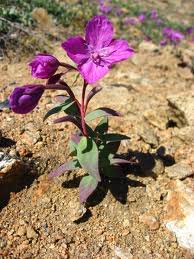Limonium
POTTING: Even though these plants are natives of salt marshes, they will flourish in any good garden soil. The border and rock garden kinds need well-drained soil and a sunny position. Heavy clay soil must be replaced with compost or lightened by adding quantities of sand or cinders. Firm planting should be done in the spring. They aren't disturbed for any years because they flower the best when well established. If they are growing poorly, they should be top-dressed with well-decayed manure in the spring. Those grown in the greenhouse, they are planted in 5-inch pots filled with two parts of fibrous loam and one part of leaf mold, with a bit of sand and decayed manure added. Take care when watering because these plants are prone to decay at soil level. The best way to water is by waiting until the soil is fairly dry before wetting. Good drainage is a must. They need shading only from the harshest rays of the sun. They should be given a cool spot with good ventilation and when beginning to bloom, occasional doses of weak liquid fertilizer. In mild climates, tender shrubby kinds can be grown outside in light, well drained soil in a sunny position.
PROPAGATION: Seeds may be sown 6 to 10 weeks before its safe for them outside, in a pot or pan filled with light soil. Set them in a cold frame or slightly heated greenhouse and once the seeds have sprouted they are pricked out and placed in a large pan or seed flat. Before they are planted outdoors, at 6 inches apart, they should be hardened off. Seeds may also be sown outside when the soil is warm. Small side shoots having rosettes of leaves can be taken off and inserted in pots of sandy soil in the summer. Set them in a shady frame and they'll form roots quickly. The old plants may also be lifted and divided in the spring. Plant the pieces where they are to grow.
 |
|
| L. latifolium |
VARIETIES
- Annuals -
L. sinuatum;
L. Bonduellii; (These two are used for drying.);
L. Suworowii. - Perennials -
L. macrophyllum;
L. latifolium;
L. tataricum nanum (also known as L. incanum nanum);
L. Gmelinii;
L. binervosum;
L. caesium;
L. minutum;
L. spathulatum;
L. eximium. - Shrubby -
L. macrophyllum (mentioned above);
L. brassicaefolium;
L. imbricatum;
L. puberulum.




